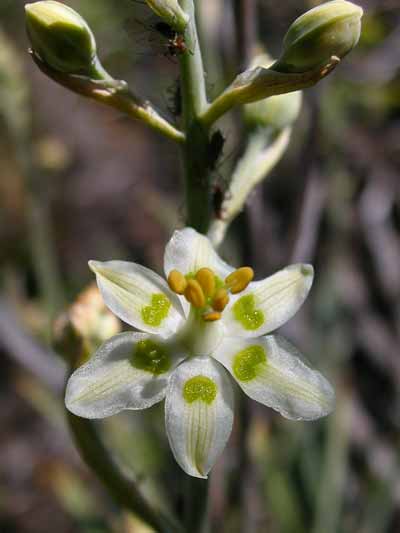Tracheophyta : Vascular Division
Taxonomy | Illustrated Key | Dichotomous Key | Biology | Division Traits
Tracheophyta Taxonomy |
Scientific Name:Kingdom: Plantae Division:
Classes:6 Families:70 Genera: 200 (approx.) Species: 600 (approx.) English Name(s):vascular plants, vascular division, Traecheophytes Gwich'in Name: |
Division Tracheophyta Traits |
Description:
Sub-Divisions:Pteridophyta
Spermatophyta
Division Size:World: Families: 400 Genera: Species: 300,000 North America: Families: Genera: Species: Yukon: Families: 80 Genera: Species: 1112 |
Illustrated Key To Division Tracheophyta | ||
|
Note: Move cursor over image for note on what to look for. Click on image to enlarge.
|
Dicotomous Key To Division Tracheophyta |
|
A: Plants that reproduce by spores; Always herbacious: Pteridophyta A: Plants that reproduce by seeds; Herbacious or woody: Spermatophyta
|
Biology of Division Tracheophyta |
Natural History:First Tracheophytes appear in the fossil record by 408 MYA. The vascular system allows plants to grow much larger and taller than those without. Over time competition leads to the refinement of the vascular system. Sometime between 390MYA and 354MYA wood, true leaves and advanced rooting systems were all developed. At that time some vascular plants became able to grow to 35 meters tall. The first Tracheophytes were all Pteridophytes (spore producing vascular plants). While the vascular system was becoming more advanced so to was the reproductive system. Eventualy leading to the evolution of the spermatophytes (seed bearing vascular plants). Xylem and PhloemXylem and Phloem are the two tissues of the vascular system. Xylem transports water and nutrients from the soil to the photosynthsizing parts of the plant (ussually the leaves). Phloem takes the sugars produced by photosynthesis from the leaves to all the other parts of the plant. While some mosses haved specialized water pumping cells, it is the presence of these tissues that make a vascular plant vascular. Wood vs. HerbsThe difference between woody plants and herbacious plants is in thier vascular systems. In Herbacious plants the vascular tissues are grouped into bundles. In Monocots these bundles are scattered throughout the stem. In Dicots these bundles are arranged in rings in the stem. Herbacious plants are most often short lived plants and most often limited in size. Woody plants are always perennials often long lived and can be very large. Woody stems have vascular tissue arranged in rings rather than bundles. The vascular tissues of woody plants continue to grow year after year allowing the plant to gain girth each year. The Xylem grows towards the inside of the stem. When the Xylem dies its cell walls remain as wood. The rings of woody plants are the result of each years growth. Each years ring is distinguishable from other years growth by the difference in growth rates of spring xylem and summer xylem. Spring xylem cells are longer with thinner cell walls. when they die they look yellowish. Summer xylen cells are shorter with thick cell walls when they die they look redish and so can be distinguished from the next years yellowish spring growth. The Phloem tissue grows towards the outside of the stem. The dead phloem along with cork tissue when dead becomes the bark of the plant and is continually flaked off as the plant grows. LeavesLeaves come in many forms visit the Leaf Glossary for examples and terminology. Leaves are the primary site of photosynthisis in most plants. The leaf surface is made of a layer of transparent cells called the epidermis. The upper side of leaves often have cuticle which is a protective waxy layer secreated from the epidemis cells. The lower side of the leaves is dotted with little pores called stomata. Stomata allow for the exchange of oxygen, water and carbondioxide in or out of the leaf. The interior of the leaf is called the mesophyle. The upper part of the mesophyle is packed tightly with photosynthesizing cells called parenchyma. The lower part of the mesophyle has losely arranged parechyma with much airspace for gas exchange. |





